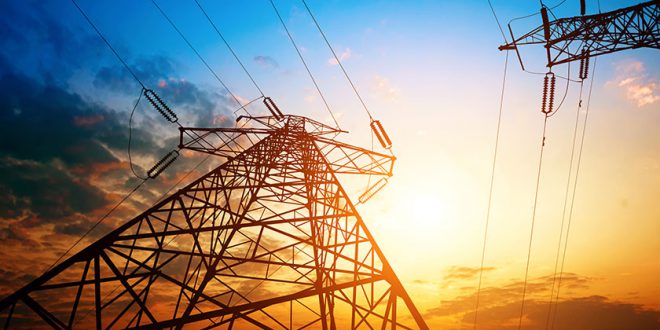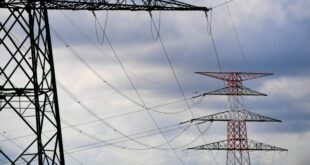All around the world. power systems are changing fast. For example last year Denmark supplied 63% of its power demand from variable renewables (wind and solar PV) while last June Great Britain went a full 18 days without burning coal for power generation.
Yet despite such examples of progress. change has not been fast enough to meet the objectives of the Paris Agreement. In fact. power sector emissions have been on the rise over the past two years and investments in variable renewable power capacity appear to have stalled for the first time in two decades. Meanwhile electrification continues in sectors such as transport – and without accelerated decarbonisation. much of the growth in power demand will be met by fossil fuels.
But having more low-carbon electricity on the grid is not enough. we need to make better use of that low-carbon electricity. That means coordinated action on the transformation of power systems.
Power system flexibility – the ability to respond in a timely manner to variations in electricity supply and demand – stands at the core of this transformation. Luckily. policy makers and industry leaders across the globe are increasingly aware of the importance of flexibility and are taking action. Over the last two years. two Clean Energy Ministerial Campaigns have contributed to developing an understanding of what technical solutions for flexibility are available – in power plants. grids. storage and on the demand side.
That’s the what of power system flexibility. But the more difficult questions are ‘how do we implement this flexibility? and who should be involved?.
The answer is: it depends. More precisely. introducing the appropriate measures to deploy power system flexibility requires a deep. thoughtful look at each country’s institutional framework. One key finding from the various workshops and forums organised by the CEM Power System Flexibility Campaign is that the changes necessary to activate innovative flexibility solutions inevitably deal with regulatory decisions.
One key myth that these same events are contributing to dismantle is that power sector regulation is far too complex and far too country-specific to profit from international sharing of best practices. In fact. it may be the contrary. This sharing of best practices is one of the main contributions of the joint IEA and 21st Century Power Partnership report Status of Power System Transformation 2019. which explores the various points of intervention. along with the relevant stakeholders for flexibility deployment.
The report describes how it is possible for policy makers to easily identify areas where they can directly enable change and areas where more targeted interventions may need wider stakeholder engagement.
It starts by looking at energy strategies. legal frameworks. and policies and programmes. These high-level instruments are usually what is thought of when looking at renewable energy policy support. While relatively far away from implementation. this level is particularly important as it sets the overall course for power system development.
Energy strategies typically lay out broad targets. such as China’s target of flexibility retrofits for 220 GW of coal-fired power plants in its 13th Five-Year Plan or Switzerland’s Energy Strategy 2050. Legal frameworks go one step closer to implementation by defining electricity industry structure along with the foundations of who does what. such as the UK’s recent bill for electric mobility or the distribution sector and flexibility reforms in Chile. Lastly. policies and programmes can be useful tools to test specific technology approaches or focus on specific aspects of the energy transition. for example Italy’s feasibility study on ‘Virtual Storage Systems’ or the creation of a working group for the modernisation of Brazil’s power sector.
While these high-level solutions are necessary and can be very effective. accelerating the energy transition for increasingly complex and decentralised power systems will increasingly require detailed fine-tuning of institutional frameworks. This is where we come to regulation. market rules and technical standards. By allocating costs and risk. regulation essentially determines who can do what. and how. Similarly. market rules and technical standards play a key role in shaping the interactions of different stakeholders in the power system.
In many cases. it may be necessary to update regulatory frameworks to recognise the new capabilities of new technologies in the power system. This might be the responsibility of the regulator in the case of vertically integrated utilities or spread across regulatory decisions. market rules and technical standards in the case of more unbundled power systems.
For example. if modern wind and solar power plants are technically able to provide frequency regulation. the recognition of their contribution to system reliability may require a regulatory decision to assess and validate their capabilities. It might also require modifying the system operator’s market rules to allow access to ancillary services. as was done in Spain.
Similarly. if digitalisation and decentralisation of the power system offer the potential of greater demand-side participation. it will be regulation that enables smaller system resources to participate in energy. capacity and ancillary service markets. How this is implemented would vary across jurisdictions. for example updating prequalification requirements may be necessary to enable aggregation. as in the EU. simply recognising independent aggregators as market players. as in Australia. or reforming retail tariffs as in Singapore.
But to know what changes should be implemented. and by who. it is critically important to understand the specific point of intervention and engage the right stakeholders. More broadly. it is important to start a conversation with a comprehensive set of stakeholders. to get an idea of what is possible and what is needed. and to compare experiences within and across countries.
Over the coming year. the IEA and PSF Campaign will continue working on this global dialogue to improve the understanding of regulatory and market design options for the deployment of system flexibility. supported by the Campaign’s co-leads – China. Denmark. Germany and Sweden. The PSF campaign is preparing initial steps to collaborate with CEM’s 21st Century Power Partnership. the Electric Vehicle Initiative and the International Smart Grid Action Network to look at the linkage between power system flexibility and transport electrification. an important conversation given the trend towards decentralisation driven by adoption of electric vehicles.
This work all aims to drive home one key-message: we need creative policy making if we are serious about accelerating the energy transition. and regulatory innovation and international cooperation are a good place to start.
 Iran Energy News Oil, Gas, Petrochemical and Energy Field Specialized Channel
Iran Energy News Oil, Gas, Petrochemical and Energy Field Specialized Channel




